10+ SAMPLE Shorthold Agreement
-
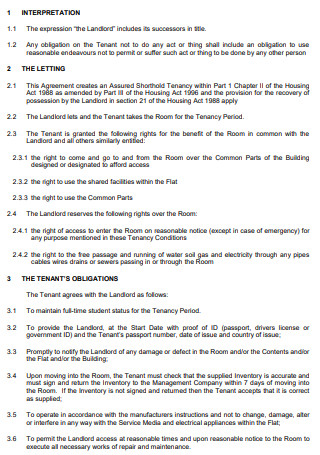
Shorthold Tenancy Agreement
download now -
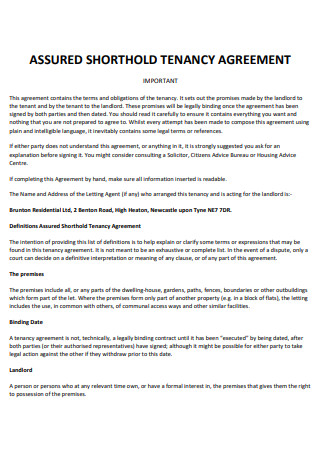
Assured Shorthold Agreement
download now -
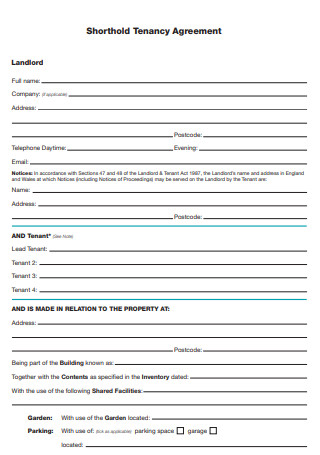
Shorthold Landlord Tenancy Agreement
download now -
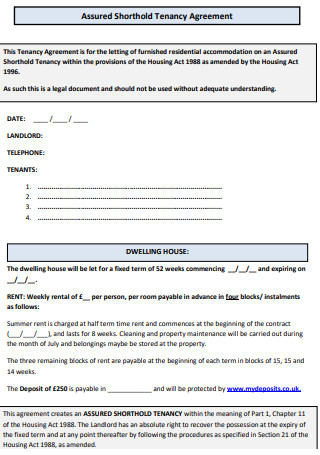
Shorthold House Tenancy Agreement
download now -

Sample Shorthold Agreement
download now -
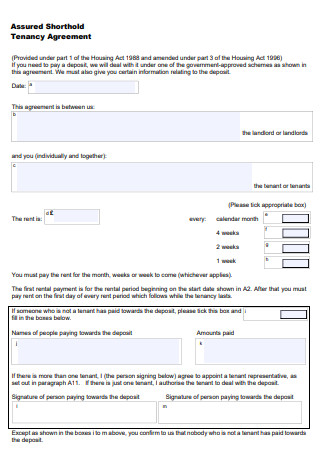
Standard Shorthold Agreement
download now -
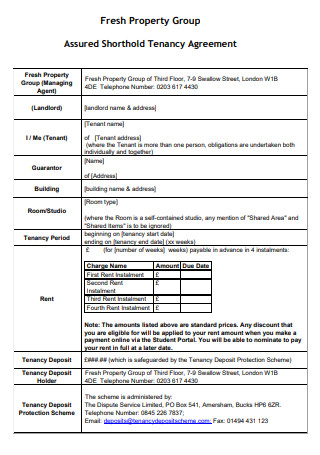
Property Shorthold Tenancy Agreement
download now -

Shorthold Tenant Agreement
download now -
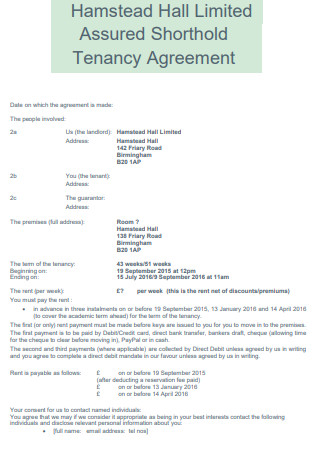
Limited Shorthold Agreement
download now -
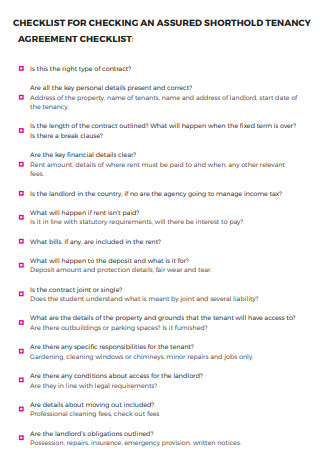
Shorthold Agreement Checklist
download now -
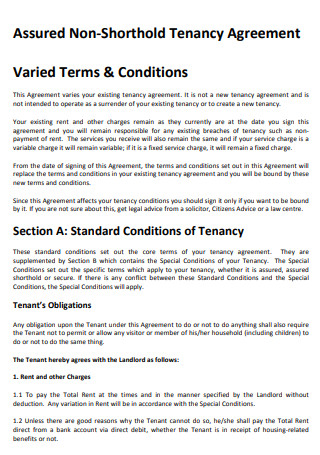
Non Shorthold Agreement
download now
What Is a Shorthold Agreement?
A shorthold agreement, also known as an assured shorthold tenancy agreement, is a legal document that is used by landlords should they wish to lease residential buildings to private renters. These agreements are normally for a term of six months, although they can last for a longer amount of time. After the original agreed-upon time, the landlord has the right to evict the renter without a legal basis and whenever they offer a reasonable notice to the tenant, and they must follow the proper procedure in doing so. Furthermore, landlords in the United Kingdom are the primary users of these types of documents.
This sort of agreement should also be utilized anytime a landlord desires to lease a residential property to a tenant in order to minimize any potential issues that may occur throughout the term by giving clearly stated terms and conditions from the get-go. They can indicate the number of rental payments and how and when they should be made, the amount of deposit necessary, and the date the lease expires, as examples of these terms and conditions. Furthermore, they may impose special regulations about the tenancy, such as prohibiting smoking or pets on the property. Should the parties involved wish to extend the tenancy period, a new type of shorthold agreement must be drafted.
Shorthold Agreement: What’s Inside?
As previously stated, shorthold agreements are necessary between landlords and tenants (especially those who reside in the United Kingdom) to avoid any potential disputes that can arise throughout the term. With that said, in order for it to be effective, it should contain the following elements:
Steps in Creating a Shorthold Agreement
This part of the article will list the steps that need to be followed for the shorthold agreement to be created to be effective and free of any errors.
1. Identify the Parties Involved
The first step that is usually performed whenever agreement documents are to be created is to identify the parties that are involved. In the case of a shorthold agreement, also known as an assured shorthold tenancy agreement, the parties that are involved are the landlord and the tenant or tenants. The most basic responsibilities of the landlord include keeping the property safe, habitable, and clean so it is suitable for occupation by the tenant. Additionally, the landlord must also perform the necessary repairs, maintain the common areas (if there are any), and keep every vital service in good working order. The most basic responsibilities of the tenant, on the other hand, are paying the rent on time and paying the exact agreed amount, and keeping the property clean.
2. Write the Main Clauses
After identifying the parties involved in the shorthold agreement, the next step that needs to be performed when creating this document is to write down the main clauses. Some of the main clauses in this document are the introductory notes, the disclaimer, the description of the property, the length of the agreement, and the rent clause. The introductory notes in this document contain the reason as to why this document was created in the first place, when the agreement should and should not be used, and the things that should be noted or should be done prior to signing the agreement. The disclaimer section indicates that the document is provided free of charge to anybody who wishes to use it, and it also specifies that only the court may rule on the legal impact and applicability of contractual terms, even if the agreement was created with the utmost care. The property description indicates the condition of the property prior to occupancy and the areas that are present within it. The length of the agreement clause should specify the start and end dates of the tenancy, and the rent clause indicates the amount of rent that needs to be paid periodically, and whether it is fixed or subject to increase.
3. Write Any Additional Terms
After writing the main clauses of the shorthold agreement, proceed to this step. What needs to be done here is to write down any additional terms that may be needed and have been agreed upon by the parties involved. The additional terms are usually specific to the tenancy. This includes terms that dictate whether smoking is allowed within the premises or not, whether pets are allowed, whether visitors are allowed and allowed for an overnight stay, the terms regarding the upkeep of the property, and so on. It should be noted, however, that when writing this section, this should not be used to contradict the main clauses and/or modify the responsibilities of the parties involved.
4. Verify the Agreement
After writing the main clauses and additional terms of the agreement, proceed to this final step. What needs to be done here is to make sure that the agreement is free of any inconsistencies and errors, and that everything that needs to be included is written down in the document. Once the verification process is complete, the parties involved can then sign the document (with optional witnesses present) and put it into action.
FAQs
What is the difference between an assured shorthold tenancy and an assured tenancy?
The difference between the two is that in an assured shorthold tenancy, the landlord is able to evict the tenant without legal reason provided that the proper procedure is followed during the end of the term and reasonable notice is provided. In an assured tenancy, the tenant has much more long-term tenure security since he/she is allowed to stay in the property until they choose to leave or the property has been rightfully repossessed by the owner.
What is a tenant?
By definition, a tenant is usually a person who rents a unit from a property owner (usually known as a landlord) for a predetermined amount of time. In a property, there can be multiple tenants. Tenants usually differ from homeowners since even though both of them pay a predetermined amount every month, the homeowners will usually own the property outright after payment has been completed.
What is a landlord?
By definition, a landlord is referred to as a person who rents or leases a property to tenants in exchange for periodic rent payments. They can be individuals or corporations. They usually carry the responsibility of maintaining the good condition of the property being rented out and carrying out repairs to any faults that may be found. The types of property that they usually own include residential properties, commercial properties, or vacant lots.
Having this type of document allows the landlord to have certain stipulations such as carrying out a rent review or defining the terms that need to be met whenever the landlord needs to hold the tenant’s deposit. This document also enables the parties involved to have a reference to look at should any disputes arise throughout the tenancy, which is why it needs to be written properly. In this article, there are plenty of example templates that are present so you can have something to look at when you need to create this document.
